"Yesteryear"
Email: [email protected].
- Show Spoilers
- Night Vision
- Sticky Header
- Highlight Links

Follow TV Tropes
http://tvtropes.org/pmwiki/pmwiki.php/Recap/StarTrekTheAnimatedSeriesS1E2Yesteryear

Recap / Star Trek: The Animated Series S1 E2 "Yesteryear"
Edit locked.

While investigating the past through the Guardian of Forever, Spock's past is accidentally changed so that he no longer exists as the Enterprise 's first officer, and now he must go back to his own past to fix whatever happened in the past that changed everything.
This episode provides examples of
- An Aesop : A very blatant one in favor of animal euthanasia, outright stating that it is "logical" to end a wounded animal's suffering rather than sustain its life only for it to live in agony. Fontana commented that it was her proudest moment in the making of TAS... and the one that met with the most controversy from viewers.
- Continuity Snarl : Either the animator did not get the memo that Vulcan has no moon, or he just plain ignored it.
- Friendless Background : This episode lets us see Spock having this. His agemates torment him endlessly for being "a Terran" and Sarek, who expects his son to act like a Vulcan, is disappointed by Spock reacting to their teasing.
- Inciting Incident : Spock comes back through the Guardian a couple of steps behind Kirk and Erickson, and thus erases himself from history.
- Grandfather Paradox : Spock in this episode saves his own life.
- Kids Are Cruel : We get our first glimpse at Spock's childhood in this episode... and it's not pretty.
- My Future Self and Me : Spock guides his seven-year-old self through a dangerous Vulcan rite of passage.
- Never Say "Die" : Actually averted. The computer explicitly states that Sarek's son died in childhood, and D.C. Fontana included the aspect of putting I-Chaya to sleep specifically to teach children that pets die and it's best to let them pass with dignity.
- One-Liner, Name... One-Liner : The last line of the episode. Spock : "Times change, doctor. Times change."
- Portal to the Past : The Guardian of Forever is used to do historical research, but things go awry, setting up the main plot.
- Ret-Gone : Spock in this episode — rather he did exist but died in childhood.
- Ripple-Effect-Proof Memory : Only Spock and Kirk remember the original timeline.
- Rite of Passage : We learn of another Vulcan ritual, this time the kahs-wan , a survival test of adulthood for Vulcan youth. The basis for the kahs-wan was to survive ten days without food, water, or weapons in Vulcan's Forge.
- Sequel Episode : The episode brings back the Guardian of Forever from " The City on the Edge of Forever ", which causes time to change, and allows Spock to restore the timeline. It also follows up on elements of Spock's childhood referred to by his mother, Amanda in " Journey to Babel ".
- Shoot the Dog : I-Chaya is stung by a venomous animal. The vet gives young Spock the option of saving him but forcing him to live with constant pain or euthanizing him. Spock chooses the latter.
- Stable Time Loop : Spock mentions the "cousin" who helped him survive the desert. There is a difference, however — in his present memories, his pet sehlat did not die.
- Stock Sound Effect : The le-matya's sounds are the iconic roar of Godzilla . It's rather amusing that his roar was used here, but Toho wouldn't let Hanna-Barbera use it in their own Godzilla series a few years later .
- Temporal Paradox : If Spock hadn't survived to adulthood, he couldn't have protected his younger self from an early death.
- The Time Traveller's Dilemma : We certainly hope Thelin the Andorian got a comparably good job in the rewritten timeline. At least he accepted his fate bravely, and Spock wished him a long and prosperous life in whatever circumstances he would be placed in. (Like most Trek time travel, it's unclear whether or not the version of him serving aboard Kirk's Enterprise got to keep doing that in a divergent timeline.)
- Star Trek: The Animated Series: S1 E1 "Beyond the Farthest Star"
- Recap/Star Trek: The Animated Series
- Star Trek: The Animated Series: S1 E3 "One of Our Planets Is Missing"
Important Links
- Action Adventure
- Commercials
- Crime & Punishment
- Professional Wrestling
- Speculative Fiction
- Sports Story
- Animation (Western)
- Music And Sound Effects
- Print Media
- Sequential Art
- Tabletop Games
- Applied Phlebotinum
- Characterization
- Characters As Device
- Narrative Devices
- British Telly
- The Contributors
- Creator Speak
- Derivative Works
- Laws And Formulas
- Show Business
- Split Personality
- Truth And Lies
- Truth In Television
- Fate And Prophecy
- Edit Reasons
- Isolated Pages
- Images List
- Recent Videos
- Crowner Activity
- Un-typed Pages
- Recent Page Type Changes
- Trope Entry
- Character Sheet
- Playing With
- Creating New Redirects
- Cross Wicking
- Tips for Editing
- Text Formatting Rules
- Handling Spoilers
- Administrivia
- Trope Repair Shop
- Image Pickin'
Advertisement:
- More to Explore
- Series & Movies
Published Sep 8, 2015
Star Trek: The Animated Series Debuted 42 Years Ago Today
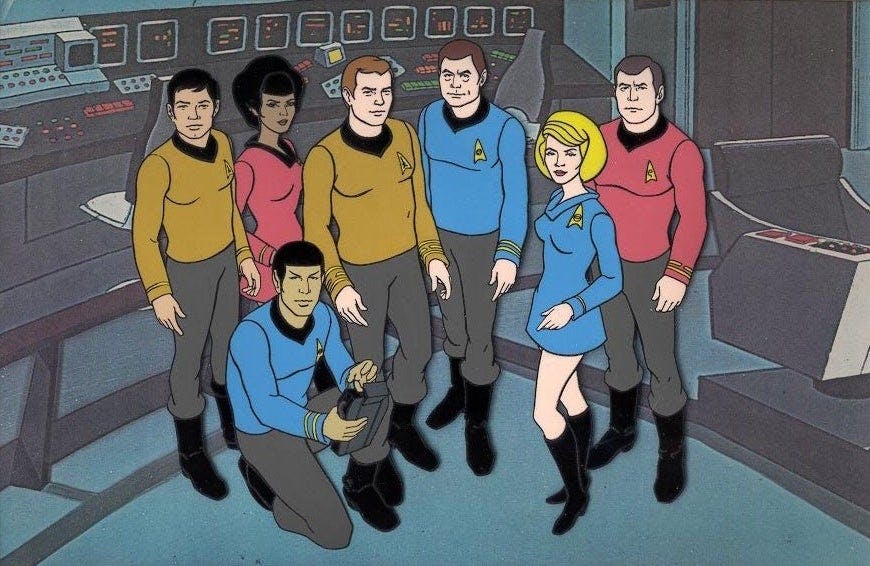
StarTrek.com
Which was the very first Star Trek show to win an Emmy Award? That'd be Star Trek: The Animated Series , which kicked off 42 years ago today... September 8, 1973. The show, from Filmmation, aired 22 episodes between 1973 and 1974, and featured the Original Series cast reprising their roles. And, yes, it's true that Leonard Nimoy insisted that Nichelle Nichols and George Takei be included as Uhura and Takei; Walter Koenig did not return as Chekov, but he later wrote the episode "The Infinite Vulcan."
The show, in addition to the tried and true, featured colorful new aliens, many that could never have been presented on TOS . Among the most memorable episodes was " Yesteryear ," a time travel installment written by Dorothy C. Fontana. It brought back not only the Guardian of Forever, but also Mark Lenard as Spock's father, Sarek. And the story made fans think and even cry, especially the heartrending sequence in which a young Spock is set on his path to logic when he chooses to let his beloved pet, I Chaya, die with dignity.
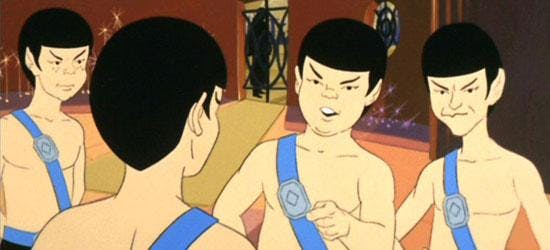
Another winner was " More Tribbles, More Troubles ," a playful half hour written by " The Trouble With Tribbles " scribe David Gerrold.
Hal Sutherland directed most of the TAS episodes. He'd previously worked on such Saturday morning cartoons as The Adventures of Batman, The Batman/Superman Hour, Aquaman, Archie, Sabrina the Teenage Witch, Fat Albert and the Cosby Kids, The Superman/Aquaman Hour of Adventure and The New Adventures of Flash Gordon . Sutherland semi-retired not long after TAS ended its run, relocating with his family to Washington State, where he lived out the next several decades relaxing, pursuing his passion for painting and marveling at TAS 's longevity. “The (animated) Star Trek series has continued showing through the years to new and older audiences throughout the world,” Sutherland told StarTrek.com during an extensive interview in March, 2011. “I recently received a letter from the Ukraine asking for a pair of autographs for a fellow and his brother who are still viewing the shows. It’s so amazing that the popularity is still there and seemingly everywhere. (Conventions) around the world are also fascinating (for me) to attend, with chances to meet childhood fans that are now grown and entertaining their own children with these shows that are still available on TV. Their thanks for the work we did back then is very personal and rewarding.”
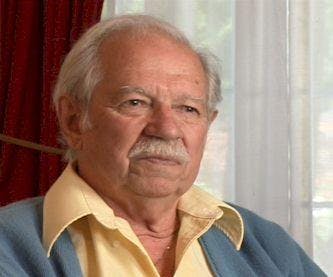
Lou Scheimer was the co-founder (with Sutherland and Norm Prescott) of the animation house Filmation, which produced TAS , as well as Fat Albert and the Cosby Kids, He-Man and the Masters of the Universe, The Archie Show, Ghostbusters and many other beloved Saturday morning cartoons. As a producer, Scheimer won a Daytime Emmy, in the Best Children’s Program category, for the animated Star Trek series, and he’d even provided a couple of voices for the show. Scheimer, who suffered from Parkinson’s disease, died on October 17, 2013, two days shy of his 85th birthday.
Get Updates By Email
- Entertainment /
Celebrate Star Trek: Discovery’s return with one of the best episodes of the most neglected Trek series
Star trek: the animated series is visually limited, but it takes its science fiction seriously in yesteryear.
By Noel Murray
Share this story
:format(webp)/cdn.vox-cdn.com/uploads/chorus_asset/file/13699647/ST_TAS_crew.jpg)
There are so many streaming options available these days, and so many conflicting recommendations, that it’s hard to see through all the crap you could be watching. Each Friday, The Verge’s Cut the Crap column simplifies the choice by sorting through the overwhelming multitude of movies and TV shows on subscription services and recommending a single perfect thing to watch this weekend.
What to watch
“Yesteryear,” a 1973 episode of Star Trek: The Animated Series . Written by D.C. Fontana (a key contributor to the original 1960s Star Trek, who penned 10 episodes and served as the story editor), “Yesteryear” takes place in the wake of a routine fact-finding mission into a “time vortex.” Though Captain James T. Kirk and the USS Enterprise’s landing party have taken great pains not to interfere with history, when they return to the present, they discover that a minor oversight has inadvertently erased first officer Spock from the timeline. To restore his reality, Mr. Spock must head back through the vortex to his own boyhood on the planet Vulcan to save his younger self from a fatal accident.
Why watch now?
Because the second season of Star Trek: Discovery debuted last night.
Set about a decade before the Enterprise’s adventures in the original series, the latest interstellar drama is different from other shows in the Star Trek TV universe. It tells more of a serialized story, and it’s focused less on a single ship’s crew and commander than on one particular upper-level Federation officer: Michael Burnham, played by former The Walking Dead actress Sonequa Martin-Green. In Discovery ’s first season, Michael gets bounced from her original post due to criminal insubordination, and she is reassigned to a new ship to help fight a war against the Klingons alongside a crew that’s not sure they can trust her… just as she (correctly) surmises that not all of them are on the up-and-up. Last year’s finale ended with some of the season’s big mysteries and plotlines being resolved, then it tacked on a coda / cliffhanger, as the USS Discovery received a distress call from the Enterprise’s pre-Kirk commander, Captain Christopher Pike.
Season 1 also spent a lot of time digging into Burnham’s background as an orphaned human who was adopted as a child by the esteemed Vulcan emissary Sarek — also known to Star Trek fans as Spock’s father. Some of the franchise’s most memorable moments have dealt with Spock’s Vulcan upbringing and how being reared as an icy, unsentimental logician affected his relationships with his human colleagues. Discovery is continuing this theme with its own heroine.
Star Trek: The Animated Series did this, too — especially in “Yesteryear.” After the original Star Trek was canceled in 1969, its three seasons became so popular in syndicated repeats that creator Gene Roddenberry decided to bring the concept back as a cartoon, and he insisted on taking the same mature approach to science fiction storytelling that had won so many new fans. “Yesteryear” is a prime example. Fontana doesn’t use her time-travel plot for some kind of goofy, kid-friendly caper, but as a way to look more closely at Spock’s origins. The episode explores the finer details of Vulcan culture, while showing how Spock’s family expresses deeper feelings in their own way.
:format(webp)/cdn.vox-cdn.com/uploads/chorus_asset/file/13699705/Sarek_and_Amanda.jpg)
Who it’s for
Trekkies and neophytes alike.
Because there’s been such an explosion of Trek product over the past few decades — movies, TV shows, games, books, and more — even fans of the franchise may not realize what a big deal Star Trek: The Animated Series was in the 1970s. Roddenberry maintained a remarkably high level of quality control on the Star Trek offshoots and merchandise after the original series went off the air. The Gold Key comic books, the paperback novels and short-story collections, and the cartoon all featured work from some of the industry’s top writers who were serious about Roddenberry’s mandate to contrast big philosophical ideas and ethical quandaries with small character moments.
The animation in Star Trek: The Animated Series is nowhere near as strong as the writing. The production company, Filmation, didn’t have the resources available to the era’s major animation studios, so the characters’ movements range from “stiff” to “nonexistent,” while the color palette looks drab and blocky. But the artists did put a design flourish into the alien planets’ backgrounds that a live-action series would’ve found difficult to replicate. And they also occasionally dropped in creatures with bizarre antennae and facial features that were beyond what most 1970s makeup artists could’ve done.
:format(webp)/cdn.vox-cdn.com/uploads/chorus_asset/file/13699702/Aleek_Om.jpg)
Nearly all of the major original cast members returned to The Animated Series as voice actors ( at Leonard Nimoy’s insistence , according to series regular George Takei), so it’s maybe best to think of this Star Trek like an illustrated radio play. In “Yesteryear,” there’s a rare subtlety to the way William Shatner and Nimoy approach their roles as Kirk and Spock, respectively. They maintain relaxed, conversational vocal tones, rather than shouting or exaggerating. That all adds even more poignancy to the subtle emotional swells of Spock’s visit with his younger self.
Where to see it
CBS All Access or Netflix. Although one of the main selling points for CBS All Access is that it’s the exclusive home of Star Trek: Discovery (as well as future Star Trek TV projects, such as Patrick Stewart’s as-yet-untitled Jean-Luc Picard drama and the upcoming raunchy cartoon Lower Decks ), Netflix, for now, still shares the streaming rights for several of the old shows, including The Next Generation , Voyager , Deep Space Nine , Enterprise , and The Original Series .
I traded in my MacBook and now I’m a desktop convert
Tesla’s autopilot and full self-driving linked to hundreds of crashes, dozens of deaths, this self-transforming megatron is as badass as it is expensive, blizzcon 2024 has been canceled, dji might get banned next in the us.
More from this stream Star Trek: Discovery: all the trailers, commentary, and updates for the new TV series
Star trek: discovery made this the perfect weekend to watch for the love of spock on netflix, star trek: discovery gets a third season and a fifth showrunner, you can now watch star trek: discovery’s season 2 premiere on youtube, star trek: discovery’s mansplaining takedown returns to the series’ roots.
- Cast & crew
- User reviews
Star Trek: The Animated Series

The further adventures of Captain James T. Kirk and the crew of the USS Enterprise, as they explore the galaxy and defend the United Federation of Planets. The further adventures of Captain James T. Kirk and the crew of the USS Enterprise, as they explore the galaxy and defend the United Federation of Planets. The further adventures of Captain James T. Kirk and the crew of the USS Enterprise, as they explore the galaxy and defend the United Federation of Planets.
- Gene Roddenberry
- William Shatner
- Leonard Nimoy
- DeForest Kelley
- 51 User reviews
- 21 Critic reviews
- 2 wins & 3 nominations
Episodes 22
Photos 1676.

- Captain James Tiberius Kirk

- Mister Spock …

- Nurse Chapel …

- Aquan Harvester …
- Orion ensign …

- Carter Winston …

- Cyrano Jones

- Harcourt Fenton Mudd

- Young Sepek
- Young Spock
- All cast & crew
- Production, box office & more at IMDbPro
More like this

Did you know
- Trivia According to Lou Scheimer there were never any ego problems between the cast members during recording sessions, although William Shatner and Leonard Nimoy had a tendency to count their characters' lines and complain when one of them had too many more than the other.
- Goofs Nurse Chapel's chest insignia is the standard oval-within-a-circle symbol for the Sciences division. However, in the live Star Trek (1966) , her uniform was unique in that she wore a red cross in place of that symbol.
- Connections Featured in The NBC Saturday Morning Preview Revue (1974)
User reviews 51
- Aug 6, 2000
- How many seasons does Star Trek: The Animated Series have? Powered by Alexa
- What year does this series take place in?
- September 8, 1973 (United States)
- United States
- StarTrek.com - Episode Guide
- Star Trek: TAS
- Filmation Associates
- Norway Productions
- Paramount Television
- See more company credits at IMDbPro
Technical specs
- Runtime 30 minutes
Related news
Contribute to this page.

- See more gaps
- Learn more about contributing
More to explore

Star Trek: The Animated Series
- View history
- Main Title Theme file info (composed by " Yvette Blais " (Ray Ellis) and " Jeff Michael " ( Norman "Norm" Prescott , main partner of Lou Scheimer in the animation studio Filmation Associates )
- 2.1 Starring the voices of
- 2.2 Also starring the voices of
- 3.1 Season 1
- 3.2 Season 2
- 4.1 Origins
- 4.2 The first recordings
- 4.3 Emmy win
- 4.4 Questionable canon and reintegration
- 4.5 Production inconsistencies
- 5 Proposed CGI reworking
- 6 Related topics
- 7.2 Documentary
- 7.3 Home video formats
- 8 External links
Summary [ ]
On the television network NBC , 22 episodes of The Animated Series were aired between September 1973 and October 1974 . Reruns continued on NBC through 1975 . The series was produced by the experienced animation house Filmation and the episodes were scripted by professional science fiction and Star Trek writers, including Larry Niven , D.C. Fontana , David Gerrold , and Samuel A. Peeples .
Some of the stories were sequels to episodes from the original series, such as " More Tribbles, More Troubles " (the follow-up to " The Trouble with Tribbles "), " Once Upon a Planet " (a sequel to " Shore Leave "), and " Mudd's Passion " (the follow-up to " Mudd's Women " and " I, Mudd ").
With the exception of Ensign Chekov , all of the regular characters from the original series continued to appear, voiced by the original actors from that series (Chekov was absent to cut down on costs of hiring the voice actors, although Walter Koenig penned an episode of the series, " The Infinite Vulcan "). Dr. McCoy was a full commander, and Nurse Chapel was a full lieutenant . New characters, such as Arex and M'Ress , were also featured. The show was the most expensive animated show on the air at the time, primarily because six "name" actors from Star Trek: The Original Series provided the voices for their characters. Nearly all the aliens and guest characters were voiced by James Doohan , Nichelle Nichols , and Majel Barrett , although some actors reprised their roles from the original series. Leonard Nimoy ( Spock ) is the only actor to voice his character in every episode of TAS. James Doohan, however, voiced different characters in every episode of the series, but missed only one episode as Montgomery Scott , the episode being " The Slaver Weapon ".
Among the returning guest actors (and characters) were Mark Lenard (as Sarek ), Roger C. Carmel (as Harry Mudd ), and Stanley Adams (as Cyrano Jones ). Although the characters Amanda Grayson , Bob Wesley , Kyle , Kor , Koloth , and Korax returned in The Animated Series , their voices were provided by the aforementioned voice talents of Majel Barrett and James Doohan.
The show featured a handful of new technologies like the recreation room (later the idea was reused in TNG , where it was known as a holodeck ) and the aqua-shuttle . It also featured many non- humanoid alien species (and even some alien officers aboard the Enterprise ) who could not have been featured within the original series' budget.
Roddenberry was adamant that this show was Star Trek (i.e. the continuation of the original series) leading to it having the same title. The addition of The Animated Series to the title was not until years later.
The series, which lasted two years, could be viewed as the completion of the Enterprise 's five-year mission. D.C. Fontana personally viewed all 22 episodes as year four. StarTrek.com considers the seasons collectively to represent the fifth and final year of the mission. [1] (X)
Although at one point Paramount Pictures did not regard the animated series as canonical, with the release of The Animated Series DVD, the studio appears to have changed its stance, and is leaning towards the animated series being part of established Star Trek canon. [2] (X) [3] (X) [4] (X) References from the series have gradually become more accepted in other Star Trek series, most notably on Star Trek: Deep Space Nine , Star Trek: Enterprise and Star Trek: Lower Decks (see the " questionable canon " section below for the complete list of references). Gene Roddenberry said that if he had known there would be more live-action Star Trek in the future, the animated series would have been far more logical and "canonable," or he might not have produced the animated series at all.
A DVD collection of the complete series was released on 21 November 2006 for Region 1.
Starring the voices of [ ]
- William Shatner as Captain Kirk
- Leonard Nimoy as Mr. Spock
- DeForest Kelley as Dr. McCoy
Also starring the voices of [ ]
- George Takei as Sulu
- Nichelle Nichols as Uhura
- Majel Barrett as Chapel and M'Ress
- James Doohan as Scott and Arex
Episode list [ ]
Season 1 [ ].
TAS Season 1 , 16 episodes:

Season 2 [ ]
TAS Season 2 , 6 episodes:
Background information [ ]
Origins [ ].
Former Original Series writer D.C. Fontana reported in the fanzine Star-Borne of 22 June 1972 that, " Paramount... [is] enormously impressed by the quantity (and quality) of fan mail they continue to receive. The possibility seems to be slowly developing of a Star Trek feature movie for theatrical release, aimed at becoming the new Star Trek television pilot… on the network front, NBC still expresses great interest in doing Star Trek in some form. Both NBC and Paramount continue to receive a great deal of mail and have had to assign secretaries for the sole job of answering it. " [5]
NBC's surprising complete turnaround (as it were they who had canceled the live-action precursor in 1969, purportedly for poor ratings performance) not only stemmed from the spectacular resurgence of the Original Series in syndication , but also from its own accounting department. Shortly before Fontana's report, NBC had replaced its old Nielsen rating system with a new and updated one. Mystified by the success of a show in syndication they were convinced was a flop, they decided to run the original Original Series figures through their new system they and found out much to their surprise that it had not only reached full penetration into their most coveted target audience, the male population between 18 and 45, but also that the series had been one of the most successful series the network had ever aired. The sickening realization hit upon the dismayed network executives that they had slaughtered the proverbial goose that laid the golden eggs, something that every Star Trek fan at the time could have told them. Hurriedly approaching Roddenberry to see if the series could be revitalized, it turned out to be unfeasible, as Paramount had only a few months earlier cleared out their warehouses from the vast majority of the remaining Star Trek production assets, they either being scrapped, given away or simply stolen. Recreating them, calculated at US$750,000, was deemed far too cost-prohibitive. It did however lead NBC to commission the creation of The Animated Series . ( Star Trek - Where No One Has Gone Before , pp. 51-52)
Roddenberry was not really interested in doing a Star Trek animated show, but had his mind set on an actual live-action resurrection of the the show. However, as Marc Cushman explained, " His ultimate goal was to get Star Trek back into [live-action] production. And he felt that the animated series, if it did really well, could bring that about. " ( The Center Seat: 55 Years of Star Trek : "Saturday Morning Pinks")
Even though they did not produce the new series themselves, Paramount Pictures, possessing all rights and title to the Star Trek brand, was legally the owner of the new property.
The first recordings [ ]
The first recording session for the animated Star Trek series was in June 1973 (on or prior to the fourth of that month ). ( The Star Trek Compendium , 4th ed., p. 143; Star Trek: Communicator issue 119 , p. 32) This was with the entirety of the series' regular cast and was the first time they had reunited since production of the original series ended in January 1969 . The recording session was held at Filmation's studios in Reseda, California , where the performers recorded the first three scripts for the series (" Beyond the Farthest Star ", " Yesteryear ", and " More Tribbles, More Troubles "). ( Star Trek: Communicator issue 119 , p. 32)
Lou Scheimer reminisces about the cast, " The glorious thing was getting them all together for the first recording session […] It was a joyous occasion. " ("Drawn to the Final Frontier – The Making of Star Trek: The Animated Series ", TAS DVD ) William Shatner recalls how he got into character; " [Kirk had] been locked away inside me for almost four years, but as soon as I opened my mouth to read his first line he was back. Slipping back into that character was like putting on a comfortable old sweatshirt; it fit. " ( Up Till Now: The Autobiography , p. 171)
On 4 June 1973, NBC publicly announced that the initial recording session had gone ahead. ( Star Trek: Communicator issue 119 , p. 32)
Emmy win [ ]
In 1975, the animated series of Star Trek won a Daytime Emmy Award in the area of "Best Children's Series" for the 1974-1975 television season. Although Star Trek 's original series had repeatedly been nominated for Emmys, this was the first such award that the franchise actually won. It became also the only best-series Emmy ever won by Star Trek as of 2020. It beat out Captain Kangaroo and The Pink Panther . ( Star Trek: The Animated Series - special feature : "Drawn to the Final Frontier – The Making of Star Trek: The Animated Series "; Star Trek - Where No One Has Gone Before , p. 57, et al. ) Incidentally, the series had already been nominated for the same award in its inaugural debut the year previously, [6] but lost out on that occasion to PBS 's Zoom .
The series essentially won the award on the basis of a certain episode. " When Filmation submitted Star Trek for the Best Children's Series Emmy, [' How Sharper Than a Serpent's Tooth '] is the episode they submitted, " explains David Wise , a co-writer of that installment. ("How Sharper Than a Serpent's Tooth" audio commentary ) The episode's other co-writer, Russell Bates , comments, " [The episode] became the only credential submitted when Filmation received an Emmy nomination for the series, and thus was instrumental in the winning of a 1975 Emmy Award. " Bates also notes that the Emmy was not the only accolade that the episode attained. [7]
Shortly after Hal Sutherland and his family moved out of Los Angeles to Washington state , he received a call that informed him of the Emmy nomination. He remembers, " This was exciting news and I spread the word to all of our friends and neighbors in case Filmation picked up the Emmy. " As he learned prior to the event, it was to be presented in New York and Lou Scheimer decided to bring his own family to the festivities. [8] The ceremony was actually on a boat in the New York harbor. Lou Scheimer's son, Lane, heard a practice session, below-decks, of the announcements being rehearsed. The elder Scheimer reflects, " He said, 'Dad, don't worry, I just saw them down there and they said it was Captain Kangaroo ' [....] So I was sitting there, drinking wine, not worried, and [getting] half-plastered. " ( Star Trek Magazine Souvenir Special , p. 58) Scheimer also personally doubted that the animated Star Trek series was about to receive the award. He states, " I was absolutely certain we weren't going to win; there was no way that show could win because it really was not a kids' show. " ( Star Trek: The Magazine Volume 1, Issue 16 , p. 68)
Hal Sutherland recalls tuning into the televised coverage of the event; " I remember gathering the family to watch the award ceremonies with me. I hoped to make them proud of what we had accomplished in some way. Sitting in front of the TV, I watched with anxiety as the nominations for best animated series came up […] The award envelope was opened and Star Trek was announced the winner for its category. " [9] Lou Scheimer (who says he was "a nervous wreck" at the time), also recollects the announcement; " Cyril Richard gets up there and says, 'And the best children's programming for Saturday morning is Star Trek and Lou Shimmer [ sic ]. I didn't know what to do. You cannot tell, but I was floating. " ( Star Trek Magazine Souvenir Special , p. 58) Hal Sutherland continues, " Lou stepped to the podium to make his acceptance speech. " [10] A transcript of that speech follows:
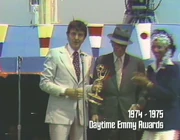
Lou Scheimer accepts the series' only Emmy
Lou Scheimer recalls the shock of having to collect the award; " I was totally flabbergasted when we did [win]. I didn't know what to say; I was not prepared. I was just aghast at the idea of being in front of all those people, waiting to hear me say something meaningful. " ( Star Trek: The Magazine Volume 1, Issue 16 , p. 68)
Watching Lou Scheimer's acceptance speech was a very emotional experience for Hal Sutherland and he was enormously disgruntled that Scheimer thanked Norm Prescott rather than him. Although Sutherland never expressed his extreme disappointment to the award recipient, Scheimer finally apologized to Sutherland in 2004 . " He […] sorrowfully related to me an apology for his 'drunken' statement at the Emmy affair regarding his confusion between Norm and I and the production credits, " explained Sutherland. " We'd both carried that haunting memory all those many years, neither wanting to bring up the tender subject. We later kissed [and made up, putting the issue behind them]. " [11]
Lou Scheimer criticized the winning of the award, saying that – even though it was "the only Emmy I've ever gotten for a show" – it was inappropriate for the animated Star Trek to receive an award for a children's show, since the series was actually meant to be " a show for the entire family and anybody who was really a fan of the original live-action show. " ("Drawn to the Final Frontier – The Making of Star Trek: The Animated Series ", TAS DVD ) Norm Prescott, on the other hand, considered the award to be a high point in Filmation's history. ( Star Trek: Communicator issue 119 , p. 79) Both Filmation, in general, and the writers of "How Sharper Than a Serpent's Tooth", were happy that the episode gained the series the award. David Wise reminisces, " We, Russell [Bates] and I, considered that an achievement. Filmation was thrilled and invited us to an Emmy party and all sorts of fun things like that. " ("How Sharper Than a Serpent's Tooth" audio commentary) Gene Roddenberry regarded the award win as "the best proof" that the animated series had been "a fairly good job." ( The Making of Star Trek: The Motion Picture , p. 20) D.C. Fontana was also "pleased" that the franchise had finally won an Emmy, later stating, " I was thrilled to death. " ("Drawn to the Final Frontier – The Making of Star Trek: The Animated Series ", TAS DVD ) In their text commentary for series finale " The Counter-Clock Incident ", Michael and Denise Okuda describe the Emmy win as the series having been "honored." The book Star Trek - Where No One Has Gone Before (p. 57) refers to the win as "a fitting send-off" for the series.
Considering the efforts the writers, including Bates, put in to tell more mature stories akin to the main series, the win of a "children's" award turned out to be somewhat of a mixed blessing as it cemented the impression of Star Trek being an immature, superficial show for adolescents only at best in the minds of the non-fan society at large, which started to become wary of the emerging " Trekkie " phenomenon. It became a large part of the reasons why to date a substantial part of "Trekdom", Creator Gene Roddenberry included, continued to refuse to consider The Animated Series part of canon, as related hereafter. ( Star Trek: The Official Guide to the Animated Series , pp. 8 & 153) Most ironically, the six-episode second season of Star Trek: Short Treks , which only became nominated in 2020 for Star Trek 's fifth "major" Emmy Award, did include two animated episodes, " Ephraim and Dot " and " The Girl Who Made the Stars ", specifically intended for children.
Questionable canon and reintegration [ ]
According to Voyages of Imagination [ page number? • edit ] , the Animated Series was officially removed from canon at Gene Roddenberry's request in 1988, with the exception of some parts involving Spock's youth, from Fontana's episode " Yesteryear ". Roddenberry was partly motivated to do so because of his disappointment that the animated series did not bring about his ultimate goal of getting back Star Trek as a live-action production, as mentioned above . The removal from canon had already been confirmed previously by reference book author Mike Okuda in the introductions of his works. ( Star Trek Chronology (2nd ed., p. vii); Star Trek Encyclopedia (4th ed., vol. 1, p. introduction); [12] (X) ) Paramount Pictures has followed suit by elevating the request to policy, having officially declared the series non-canon. ( Star Trek Encyclopedia (1st ed., p. iii))
Despite this request, Memory Alpha recognizes The Animated Series as a valid resource. There were also strong indications from the StarTrek.com (former) official website that TAS was unilaterally, yet formally, re-added to the official canon in 2006 by the franchise for the sole purpose of commercially promoting the occasion of the series' release on DVD that year. ( [13] (X) [14] (X) [15] (X) ; See also the content policy ).
Writers from later Star Trek series have integrated various references from the series into their works. Star Trek: Enterprise writer/producer Manny Coto once remarked, " They did some great stuff in the animated series and why not use some of that? " ( Cinefantastique , Vol. 37, No. 2, p. 37) Star Trek: The Next Generation and Star Trek: Deep Space Nine writing staffer Ronald D. Moore likewise commented, " It's kinda cool to throw in the odd reference [to TAS] here and there. " ( AOL chat , 1998 ) The following references were used in subsequent series:
- The city of Shi'Kahr resurfaced on an okudagram in " The Emissary " called the "Shi-Kar Desert Survival, Vulcan", which was also a reference to Spock's kahs-wan . The city was again indirectly mentioned in " Fusion " in reference to the Shi'Kahr Academy , and later served as the namesake for the USS ShirKahr , seen but not mentioned in " Tears of the Prophets ". A Vulcan city which looks very similar to Shi'Kahr was shown in the new establishing shots used in the remastered version of " Amok Time ".
- An okudagram featured in " Eye of the Beholder " referenced the Sepek Academic Scholarship , which coincides with the name of a Vulcan child in " Yesteryear ".
- Vulcan's Forge was later referenced in " Change of Heart " and was the focus of a three-episode ENT arc: " The Forge ", " Awakening ", and " Kir'Shara ".
- Both Lunaport and the kahs-wan were mentioned in " The Catwalk ".
- The sehlat , which first appeared in "Yesteryear" in animated form, was recreated in CGI in ENT : " The Forge ".
- The nearby planet seen briefly behind Shi'Kahr made it into the original version of Star Trek: The Motion Picture . For the director's cut it was decided to remove the planet (named Charis or T'Khut in the novel Spock's World ).
- The title of " healer " for a Vulcan physician was referred to for Healer Senva in " Prophet Motive ".
- Star Trek VI: The Undiscovered Country confirmed Kirk's middle name as "Tiberius", a name first revealed in " Bem ". The name had been used in novels , including in the preface to the novelization of Star Trek: The Motion Picture .
- A chart of Federation space, seen in " Conspiracy ", contained references to solar objects first mentioned in TAS, including the planets Canopus III , Lactra VII , Omega Cygni , Phylos , and Kzin , and the stars Beta Lyrae and Pallas 14 .
- In the episode " Once More Unto the Breach ", Kor recalled his former vessel, the IKS Klothos , which was the ship he commanded in the " The Time Trap ". It was a D5 Klingon ship (where D5s were later shown in Enterprise ), rendered as a questionably-drawn D7, but in both cases it was commanded by Kor.
- The episode " Broken Link " referred to Edosian orchids , the episode " These Are the Voyages... " mentioned Edosian suckerfish , and there were several other Enterprise references to the Edosian slug – all homages to the Edosian Lt. Arex .
- Coincidental references which may or may not be attributed to terms first used in The Animated Series include Klingon Imperial Fleet (" The Time Trap ") and Starbase 23 (" The Terratin Incident ").
- Amanda 's maiden name, Grayson, was given in the series, and later established in Star Trek V: The Final Frontier .
- The holodeck concept first appeared in " The Practical Joker ", and was later adopted into Star Trek: The Next Generation . The use of holograms was used in " Lethe ", showing that USS Discovery was equipped with similar technology during 2250s .
- The idea of an additional turbolift on the bridge first appeared in TAS, and ultimately adopted in the live-action franchise from Star Trek: Phase II onward.
- The act of entering the warp nacelles first appeared in TAS, and later appeared in the TNG episode " Eye of the Beholder " and in the ENT episode " The Catwalk ".
- In " The Counter-Clock Incident ", a race is shown that has a life span where individuals start out old and grow younger until death. Star Trek: Voyager later reused this idea in one of its episodes for a race of aliens .
- In Star Trek IV: The Voyage Home , two members of the Caitian species are seen, which FASA 's RPG sourcebook , Star Trek IV Sourcebook Update , identified as the same species as M'Ress .
- The robot grain ships from " More Tribbles, More Troubles " have later been established in the 2008 remastered TOS episodes " Charlie X " (manned version) and " The Ultimate Computer " (robot version) as belonging to the Antares -type of starships. Later to also appear as wreckage in the Lower Decks episode " Terminal Provocations ".
- Star Trek: Discovery confirmed Robert April from " The Counter-Clock Incident " to be an important Starfleet captain in the episode " Choose Your Pain " when Saru asks the ship's computer to list Starfleet's most decorated captains. He was later confirmed as the first captain of the USS Enterprise , preceding Christopher Pike , in " Brother ".
- Lower Decks also made a mention of Spock Two from " The Infinite Vulcan " in " Veritas " before featuring his skeleton in " Kayshon, His Eyes Open ".
- " Second Contact " introduced another Caitian, T'Ana , as a series' regular.
- " Envoys " included the Aurelian from " Yesteryear "and the Vendorian from " The Survivor ".
- " Much Ado About Boimler " introduced an Edosian character whose species was first featured through the series' regular Arex .
- " Mugato, Gumato " included the appearance of a Kzinti from " The Slaver Weapon ".
- " An Embarrassment Of Dooplers " depicted a total of five TAS species appearances, the aforementioned Caitian, Kzinti, Edosian, Aurelians, and a prominent return of several members of Em/3/Green's species , who first appeared in " The Jihad ".
- " Mining The Mind's Mines " included the appearance of Kukulkan from "How Sharper Than a Serpent's Tooth".
Several non-canon productions have also made reference to TAS:
- A second exit for the bridge, referenced in Franz Joseph 's Star Fleet Technical Manual .
- DC Comics' writer Len Wein reintroduced M'Ress and Arex into the post- Star Trek IV: The Voyage Home comics , and they were further developed by Michael Carlin and Peter David until that series went into hiatus.
- Some of the worlds and aliens in the series were included in the 1989 book called The Worlds of the Federation .
- Author Peter David later integrated M'Ress and Arex into his 24th century book series Star Trek: New Frontier , beginning with the novel Gateways #6: Cold Wars . They also appear in IDW's "New Frontier" comic miniseries, Turnaround , by David.
- The trilogy Crucible by David R. George III includes the plot from "Yesteryear" in its history.
- The IDW comic miniseries Star Trek: Year Four takes place during the TAS timeframe and features appearances by Arex and M'Ress.
Production inconsistencies [ ]
One unfortunate reality of an animated television series was the occasional color discrepancy.
The most notable color discrepancy was shown with several appearances of the color pink. Unknown to the rest of the production staff, director Sutherland was color-blind, so to him, pink was light gray. (" Drawn to the Final Frontier – The Making of Star Trek: The Animated Series ", TAS DVD ) While true, Kaplan was not color-blind and was often conscientious of the color decisions being made.
The following images are examples of Irv Kaplan's personal color choices:
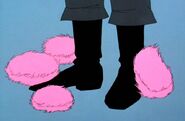
Reversed color variant
According to Bob Kline, " Pink equals Irv Kaplan. Irv was in charge of ink and paint, coloring the various characters and props (and he would do it himself in his office, he would sit down with a cel and paint it). He was also referred to by many people there as the purple and green guy. You'll see in a lot of scenes, purple and green used together – that was one of his preferences. He made dragons red, the Kzintis' costumes pink. It was all Irv Kaplan's call. He wasn't listening to anyone else when he picked colors, or anything. " ( Star Trek: The Official Guide to the Animated Series , p. 26)
Several other unintentional coloring issues also cropped up. Kirk's type 1 phaser had its color scheme reversed (black on silver/grey, instead of silver on black), and some shots featured characters wearing Starfleet uniforms of the wrong division or colors.
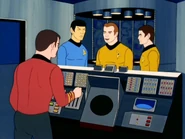
As a result of the use of recycled footage, there were also many instances of randomly misplaced characters and equipment. Recurring inconsistencies in this vein include the random appearance of Lt. Kyle in several transporter room scenes, close-up shots of Scott operating the transporter controls, the interchanged appearances with Uhura and M'Ress at the communications station, and the appearance of characters on the bridge while simultaneously appearing in another section of the ship or on the surface of a planet.
Another inconsistency that appears sometimes is Scott shown with the rank of captain, and Kirk with a unknown rank insignia.
The Animated Series also made substantial changes to set locations used in the original series:
- A second turbolift is installed on the bridge, next to the main viewscreen.
- The bridge stations are rounded, and form a perfect circle, instead of the hexagonal TOS bridge set.
- The access stairs to the upper level engineering deck (seen in TOS seasons 2 and 3) are gone.
One production glitch that was avoided from being televised was Uhura having white skin. " Someone in the paint department used Nurse Chapel's colors on Uhura, who turned Caucasian with the flip of a brush! " exclaims Malcolm C. Klein, a management and marketing consultant to Filmation. " Fortunately, that one was caught before the film reached the lab. " ( Starlog , Vol. 2, No. 6, p. 47)
On many other occasions, body parts on various characters would go missing. According to animator Bob Kline , " it was usually something the cameraman did on purpose or accident to keep the cel levels at six. You couldn't use more than six cel levels under the camera. " This was often completed to allow more animation to appear on screen, as any more than six cells would make the animation appear "muddier". ( Star Trek: The Official Guide to the Animated Series , p. 27)
Proposed CGI reworking [ ]
In 1998 , there were talks of TAS being re-worked with CGI animation. According to Mainframe Entertainment ( Reboot ):
“Mainframe proposes to produce a television series continuing the original adventures of Captain James T. Kirk and the crew of the Starship Enterprise (NCC-1701). The new series will reunite the original ‘young’ crew by the use of modern technology and production methods developed by Mainframe over the last 5 years.
The new series will incorporate a ‘virtual’ cast performing in 3D computer generated sets, bringing together the advantages of new technology with the sensibilities of traditional film making.
In the early Seventies, ‘Filmation’ produced 22 one-half hour traditionally animated episodes based on the original ‘STAR TREK’ franchise.
It is our intention to take these ‘Filmation’ episodes and use them as a starting point to craft the new series. By using the original recordings of the core cast, carefully re-working the scripts, and rerecording all incidental characters, we believe that it is possible to bring the storylines up to the high standards expected of a ‘STAR TREK’ series today.”
The project was never realized. [16]
Related topics [ ]
- TAS directors
- TAS performers
- TAS recurring character appearances
- TAS writers
- Star Trek Logs by Alan Dean Foster
- Undeveloped TAS episodes
- Star Trek: Final Frontier , a proposed but undeveloped animated series
- Star Trek: Lower Decks
- Star Trek: Prodigy
- These Are the Voyages: Gene Roddenberry and Star Trek in the 1970s, Volume 1 (1970-75) , February 2019
- Star Trek: The Official Guide to the Animated Series , September/October 2019
Documentary [ ]
- The Center Seat: 55 Years of Star Trek : "Saturday Morning Pinks" ( The History Channel , 5 November 2021)
Home video formats [ ]
- Star Trek: The Animated Series on VHS
- Star Trek: The Animated Series on Betamax
- Star Trek: The Animated Series on LaserDisc
- Star Trek: The Animated Series on DVD
- Star Trek: The Animated Series on Blu-ray
External links [ ]
- Star Trek: The Animated Series at Memory Beta , the wiki for licensed Star Trek works
- Star Trek: The Animated Series at Wikipedia
- Star Trek: The Animated Series at StarTrek.com
- The Making of Star Trek: The Animated Series (X) at StarTrek.com
- The Animated Series Gets Real (X) at StarTrek.com
- DanHauserTrek.com – Guide to Animated Star Trek
- Star Trek: The Animated Series at Ex Astris Scientia
- Star Trek: The Animated Series at the Internet Movie Database
- StarTrekAnimated.com – fan site

- Web Channels
- Star Trek: The Animated Series

An expedition through the Guardian of Forever inadvertently prevents Spock from traveling back to his childhood to save his younger self. Spock discovers that history has recorded that he died at age 7 undergoing the Kahs-wan ordeal. Spock travels back to 2237 to save his own life. Spock is successful in restoring the proper timeline; however, this time, his pet sehlat dies during the ordeal.

By Gadfly on Sep 15, 2015
The Enterprise delivers a team of historians to the planet of the Guardian of Forever. As two historians monitor the Guardian, Kirk and Spock accompany Historian Erikson to an observation mission to Orion a thousand years in the past. However, when Spock comes through the portal, McCoy doesn't recognize him. Assuming it's a practical joke, the party beams up to the ship only to discover that Scotty doesn't recognize Spock either. However, Kirk has a surprise of his own when he doesn't recognize…
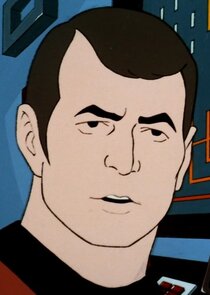
James Doohan
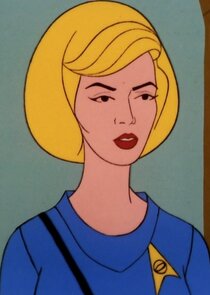
Majel Barrett Roddenberry
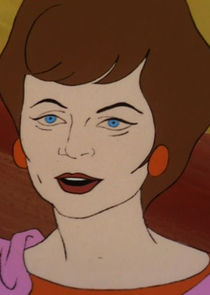
Cast Appearances
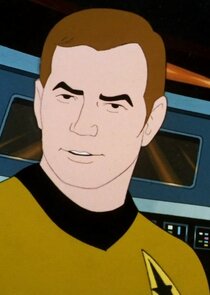
William Shatner
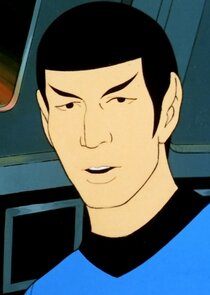
Leonard Nimoy
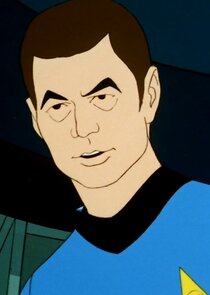
DeForest Kelley
Episode discussion.
No comments yet. Be the first!
Screen Rant
3 ways star trek: discovery showed how dangerous temporal wars were.
Introduced in Star Trek: Enterprise, the Temporal Wars took place across Federation history. Here's what Discovery has revealed about the conflict.
- The Temporal Wars revealed in Star Trek: Discovery had lasting impacts on key events in the Star Trek universe.
- Time bugs like the Krenim chronophage from Voyager can trap starships in loops, impacting future conflicts.
- The Guardian of Forever was a key weapon in the Temporal Wars, with implications for characters like Georgiou.
Star Trek: Discovery has demonstrated how dangerous the Temporal Wars were, by revealing three things about its lasting impact on the Star Trek universe. Introduced in Star Trek: Enterprise , the Temporal Wars were a major conflict between various powers, including the Federation, that took place across the entire Star Trek timeline . In Star Trek: Discovery season 5, episode 4, "Face the Strange", written by Sean Cochran and directed by Lee Rose, Captain Michael Burnham (Sonequa Martin-Green) and the crew of the USS Discovery become victims of a Krenim chronophage, a deadly weapon left over from the Temporal Wars .
The " time bug " from Star Trek: Discovery season 5, episode 4 isn't the first time that the modern franchise has explored the ramifications of the Temporal Wars. In Star Trek: Strange New Worlds season 2, episode 3, "Tomorrow, and Tomorrow, and Tomorrow", Lt. La'an Noonien-Singh (Christina Chong) faced off against a Romulan time agent, Sera (Adelaide Kane). During their confrontation, Sera revealed that the Temporal Wars have changed the dates of key Star Trek events like the Eugenics Wars and World War 3 . Set roughly 200 years after the Temporal Wars ended, Star Trek: Discovery has revealed even more information about the dangers of this space-time conflict.
Star Trek: Discovery Reveals A Voyager Enemy Played A Big Role In The Temporal Wars
Crossing over between star trek universes is fatal.
In Star Trek: Discovery season 3, episode 9, "Terra Firma, Part 1", it was revealed that time soldiers fighting in the Temporal Wars had to contend with a horrific metaphysical affliction. When former Terran Emperor Philippa Georgiou (Michelle Yeoh) began breaking down on a molecular level, Dr. Hugh Culber (Wilson Cruz) sought answers. Federation scientist Dr. Kovich (David Cronenberg) revealed that Georgiou wasn't the first person to experience this condition. During the Temporal Wars, a time soldier called Yorg from the Kelvin Timeline became trapped in the prime Star Trek universe after traveling forward from the 24th century .
Although it's just a hologram, Yor is currently the only character from the Kelvin Timeline's 24th century that's been seen on screen.
Yor and Georgiou were breaking down because the molecules in their body were fighting to return to the correct universe and time period . The only known cure was to return Yor to his own universe, but this was prohibited by the Interdimensional Displacement Restriction, a key tenet of the Temporal Accords. Starfleet fought the wars to uphold the Federation's Temporal Accords, and so refused to break them by returning Yor, and Georgiou to their own universes. Instead, other alternatives had to be pursued to cure Georgiou of her condition, so that she wasn't euthanized like the tragic Yor.
Temporal Wars Wanted To Use The Guardian Of Forever As A Weapon
To cure Georgiou of her condition, she and Burnham had to bargain with the Guardian of Forever, first seen in Star Trek: The Original Series . In "City on the Edge of Forever", Captain James T. KIrk (William Shatner) discovers the Guardian on a planet where the timelines of the Milky Way galaxy converge. The Guardian was a sentient time portal, constructed by an unknown alien race, but described itself as neither machine nor being . In Star Trek: The Animated Series season 1, episode 2, "Yesteryear", the Guardian allows Federation scientists to use it to observe their own history.
Scotty actor James Doohan voiced the Guardian of Forever in Star Trek: The Animated Series ' "Yesteryear"
By the 32nd century, however, the Guardian of Forever was forced to relocate due to the Temporal Wars. Given that it allowed access to the entire course of history, the various powers involved in the Temporal Wars wanted to weaponize the Guardian's abilities against their enemies. The Guardian therefore transported itself to the planet Dannus V, where it remained in hiding until it was discovered by Burnham and Georgiou in Star Trek: Discovery season 3. Now able to assume the humanoid form of Carl (Paul Guilfoyle), the Guardian of Forever was more reluctant to help visitors, forcing Georgiou to prove herself to him by returning to the Mirror Universe to show how much she'd changed .
Star Trek: Voyager’s Krenim Time Bugs Can Trap Starships In Loops
Star Trek: Discovery season 5, episode 4, "Face the Strange" confirmed that the Krenim Imperium, introduced in Star Trek: Voyager, played a role in the Temporal Wars. Moll (Eve Harlow) and L'ak (Elias Toufexis) planted a Krenim chronophage aboard the USS Discovery by pinning it to the uniform of Ensign Adira Tal (Blu del Barrio). Once the chronophage was aboard, it burrowed itself into Discovery's engineering and trapped the ship in a random cycle of their own past and future . While the USS Discovery was trapped in a time loop, Moll and L'ak could get a head start on the next clue in the hunt for the Progenitors' technology.
Commander Rayner (Callum Keith Rennie) confirmed that this weapon was left over from the Temporal Wars, where it had been used against various enemy ships. Unable to break out of the loop, a starship could find itself in a completely changed battlefield once the time bug ran out of juice. In the case of the USS Discovery, their time bug nearly led to an inevitable conflict with Star Trek: DS9 's Breen . It's a typically tricksy time weapon from the masters of temporal technology, the Krenim, who once built a weapon that could remove entire species from the space-time continuum.
Captain Kathryn Janeway (Kate Mulgrew) destroyed the Krenim time ship, negating the timeline where it was built, however it's clear that this didn't stop the species from experimenting with temporal weaponry.
The confirmation that Star Trek: Voyager 's Krenim Imperium were involved in the Temporal Wars further heightens the stakes of a conflict that is technically still ongoing. While the Temporal Wars may be over in Star Trek: Discovery 's 32nd century, there are still battles taking place elsewhere in the Star Trek timeline. This means that starship crews from Star Trek: Strange New Worlds to Star Trek: Lower Decks could find themselves embroiled in the devastating temporal conflict first started in Star Trek: Enterprise .
Star Trek: Discovery streams Thursdays on Paramount+.
Star Trek: Discovery
*Availability in US
Not available
Star Trek: Discovery is an entry in the legendary Sci-Fi franchise, set ten years before the original Star Trek series events. The show centers around Commander Michael Burnham, assigned to the USS Discovery, where the crew attempts to prevent a Klingon war while traveling through the vast reaches of space.
Star Trek: Enterprise
Star Trek: Enterprise acts as a prequel to Star Trek: The Original Series, detailing the voyages of the original crew of the Starship Enterprise in the 22nd century, a hundred years before Captain Kirk commanded the ship. Enterprise was the sixth series in the Star Trek franchise overall, and the final series before a twelve-year hiatus until the premiere of Star Trek: Discovery in 2017. The series stars Scott Bakula as Captain Jonathan Archer, with an ensemble cast that includes John Billingsley, Jolene Blalock, Dominic Keating, Anthony Montgomery, Linda Park, and Connor Trinneer.
Star Trek: The Original Series
Star Trek: The Original Series follows the exploits of the crew of the USS Enterprise. On a five-year mission to explore uncharted space, Captain James T. Kirk (William Shatner) must trust his crew - Spock (Leonard Nimoy), Dr. Leonard "Bones" McCoy (Forest DeKelley), Montgomery "Scotty" Scott (James Doohan), Uhura (Nichelle Nichols), Chekov (Walter Koenig) and Sulu (George Takei) - with his life. Facing previously undiscovered life forms and civilizations and representing humanity among the stars on behalf of Starfleet and the United Federation of Planets, the Enterprise regularly comes up against impossible odds and diplomatic dilemmas.
Star Trek: Voyager
The fifth entry in the Star Trek franchise, Star Trek: Voyager, is a sci-fi series that sees the crew of the USS Voyager on a long journey back to their home after finding themselves stranded at the far ends of the Milky Way Galaxy. Led by Captain Kathryn Janeway, the series follows the crew as they embark through truly uncharted areas of space, with new species, friends, foes, and mysteries to solve as they wrestle with the politics of a crew in a situation they've never faced before.

IMAGES
VIDEO
COMMENTS
List of episodes. " Yesteryear " is the second episode of the first season of the animated American science fiction television series Star Trek: The Animated Series. It first aired in the NBC Saturday morning lineup on September 15, 1973, and was written by veteran Star Trek writer D. C. Fontana. [note 1] Widely regarded as one of the best ...
Yesteryear: Directed by Hal Sutherland. With William Shatner, Leonard Nimoy, DeForest Kelley, George Takei. After finding himself erased from recent history, Spock must travel back in time to save himself as a youth.
The book Star Trek 101 (p. 48), by Terry J. Erdmann and Paula M. Block, cites this installment as "The Best Episode" of Star Trek: The Animated Series. The same publication also raves, " 'Yesteryear' deals with an interesting science fiction premise and carries the emotional significance found in the best Star Trek live-action episodes.
The many complicated issues explored in this story raise it far above the standard Saturday morning fare. Mark Lenard, who played Sarek in the original series episode "Journey to Babel", returned to provide the voice of Sarek in this animated episode. This episode establishes Spock's mother's maiden name as Amanda Greyson.
This is yet another tie-in between the Animated and the current live-action STAR TREK series, which makes the animated series that much more canon! Vulcan's Forge is also the title of a 1998 original STAR TREK book published in 1998 by Pocket Books. We learn that Spock's home town on Vulcan was ShiKahr in this episode.
Spock travels back in time to prevent his death as a young Vulcan. Watch Full Episodes . Full Episodes. Season 1. Season 1 ; Season 2
Star Trek: The Animated Series S1 E2 "Yesteryear". "Shhhh, young me, don't try to make sense of all this." While investigating the past through the Guardian of Forever, Spock's past is accidentally changed so that he no longer exists as the Enterprise 's first officer, and now he must go back to his own past to fix whatever happened in the past ...
Yesteryear . SUBSCRIBE . S1 E3 Sep 22, 1973 . One of Our Planets is Missing . SUBSCRIBE . S1 E4 Sep 29, 1973 . The Lorelei Signal ... Star Trek The Animated Series . Watch Full Episodes . Episode Guide . The animated adventures of Captain Kirk, Mr. Spock and the crew of the Starship Enterprise. ...
Diving into the Star Trek archive, for its golden anniversary, StarTrek.com highlights an interview with the legendary Star Trek icon D.C. Fontana discussing her approach to the Spock-centric story she penned in "Yesteryear."
Among the most memorable episodes was "Yesteryear," a time travel installment written by Dorothy C. Fontana. It brought back not only the Guardian of Forever, but also Mark Lenard as Spock's father, Sarek. ... Scheimer won a Daytime Emmy, in the Best Children's Program category, for the animated Star Trek series, and he'd even provided a ...
Spock chooses the logical path rather than the emotional shortcut, and returns to his father where he announces, "I chose Vulcan." "Yesteryear" was written by D.C. Fontana, who wrote one or more episodes for TOS, TAS, TNG, and DS9. This is easily the most character-driven of all the TAS episodes, and it's a wonder and a bit of a shame this ...
This animated Spock story told us more about his backstory *and* about Vulcan than any Original Series episode. Jimmy, Dom, and Fr. Cory talk about how the r...
"Yesteryear," a 1973 episode of Star Trek: The Animated Series.Written by D.C. Fontana (a key contributor to the original 1960s Star Trek, who penned 10 episodes and served as the story editor ...
The logo is quite similar to The Original Series.. Star Trek: The Animated Series (TAS) is an American animated science fiction television series created by Gene Roddenberry.It originally aired simply under the title Star Trek, subtitled Created by Gene Roddenberry, on Saturday mornings from September 8, 1973 to October 12, 1974 on NBC, spanning 22 episodes over two seasons.
This is a tie-in between the Animated and the current live-action STAR TREK series, which makes the animated series that much more canon! Vulcan's Forge is also the title of a 1998 original STAR TREK book published in 1998 by Pocket Books. This episode, "Yesteryear", established Spock's mother Amanda's maiden name as Grayson.
The Target Audience are watching Star Trek The Animated Series for the first time!! Join them as they react to episode 2 the beloved tv series YesteryearFULL...
Star Trek: The Animated Series: Created by Gene Roddenberry. With William Shatner, Leonard Nimoy, DeForest Kelley, George Takei. The further adventures of Captain James T. Kirk and the crew of the USS Enterprise, as they explore the galaxy and defend the United Federation of Planets.
The Animated Star Trek Transcripts - Yesteryear. Yesteryear Stardate: 5373.4 Original Airdate: 15 Sep, 1973. Captain's log, stardate 5373.4. We are in orbit around the planet of the time vortex, the focus of all the timelines of our galaxy. Our mission is to assist a team of historians in the investigation of Federation history.
Summary []. On the television network NBC, 22 episodes of The Animated Series were aired between September 1973 and October 1974.Reruns continued on NBC through 1975.The series was produced by the experienced animation house Filmation and the episodes were scripted by professional science fiction and Star Trek writers, including Larry Niven, D.C. Fontana, David Gerrold, and Samuel A. Peeples.
An expedition through the Guardian of Forever inadvertently prevents Spock from traveling back to his childhood to save his younger self. Spock discovers that history has recorded that he died at age 7 undergoing the Kahs-wan ordeal. Spock travels back to 2237 to save his own life. Spock is successful in restoring the proper timeline; however, this time, his pet sehlat dies during the ordeal.
Spock returns to the Vulcan of his youth in an attempt to restore the future. Full episode available http://www.cbs.com/classics/star_trek_animated/video.
Scotty actor James Doohan voiced the Guardian of Forever in Star Trek: The Animated Series' "Yesteryear" By the 32nd century, however, the Guardian of Forever was forced to relocate due to the Temporal Wars. Given that it allowed access to the entire course of history, the various powers involved in the Temporal Wars wanted to weaponize the ...
An upcoming Live-Stream series, Yesteryear. It is a Star Trek Adventures Campaign set in the early days of what would come to be known as the Federation. Thi...
Das Zeitportal (Originaltitel: Yesteryear) ist die zweite Episode der ersten Staffel der Science-Fiction-Zeichentrickserie Die Enterprise.Sie wurde in englischer Sprache erstmals am 15. September 1973 bei NBC ausgestrahlt. In Deutschland war sie zum ersten Mal unter dem Titel Die Täuschung am 19. Oktober 1976 in einer stark geschnittenen und inhaltlich veränderten synchronisierten Fassung im ...